The posters that advertised pro wrestling in small-town Canada—particularly those hyping shows promoted by “Bearman” Dave McKigney—are works of art in a genre truly their own.
The rigid single-colour planes and offset grids of the posters allowed McKigney to practically shout like a carnival barker from every lamppost in town.
In the main event, the dastardly Sheik will square off against the charismatic “Arriba” Luis Martinez. Black-and-white portraits depict wrestlers glowering, flexing, and snarling, with names like Sweet Daddy Siki, Ricky Johnson, “Crazy” Chris Colt, “Maniac” Mark Lewin, and Angelo “King Kong” Mosca.
And don’t forget the midgets! And the lady wrestlers! Come see, the posters blared, the wrestling bear, Gentle Ben! Some towns, according to the posters, even got to glimpse at wrestling’s greatest-ever spectacle, Andre the Giant.
Sadly, McKigney died 32 years ago today on July 4, 1988, when a van he was traveling in with fellow wrestlers swerved off a road to avoid hitting a moose in Newfoundland and Labrador.
SlamWrestling.net recently caught up with Conrad Gargus, the designer of the iconic “Bearman” wrestling posters, to chat at length about his stepfather Dave McKigney, the travelling carnival lifestyle, and the art of advertising small-town wrestling shows.
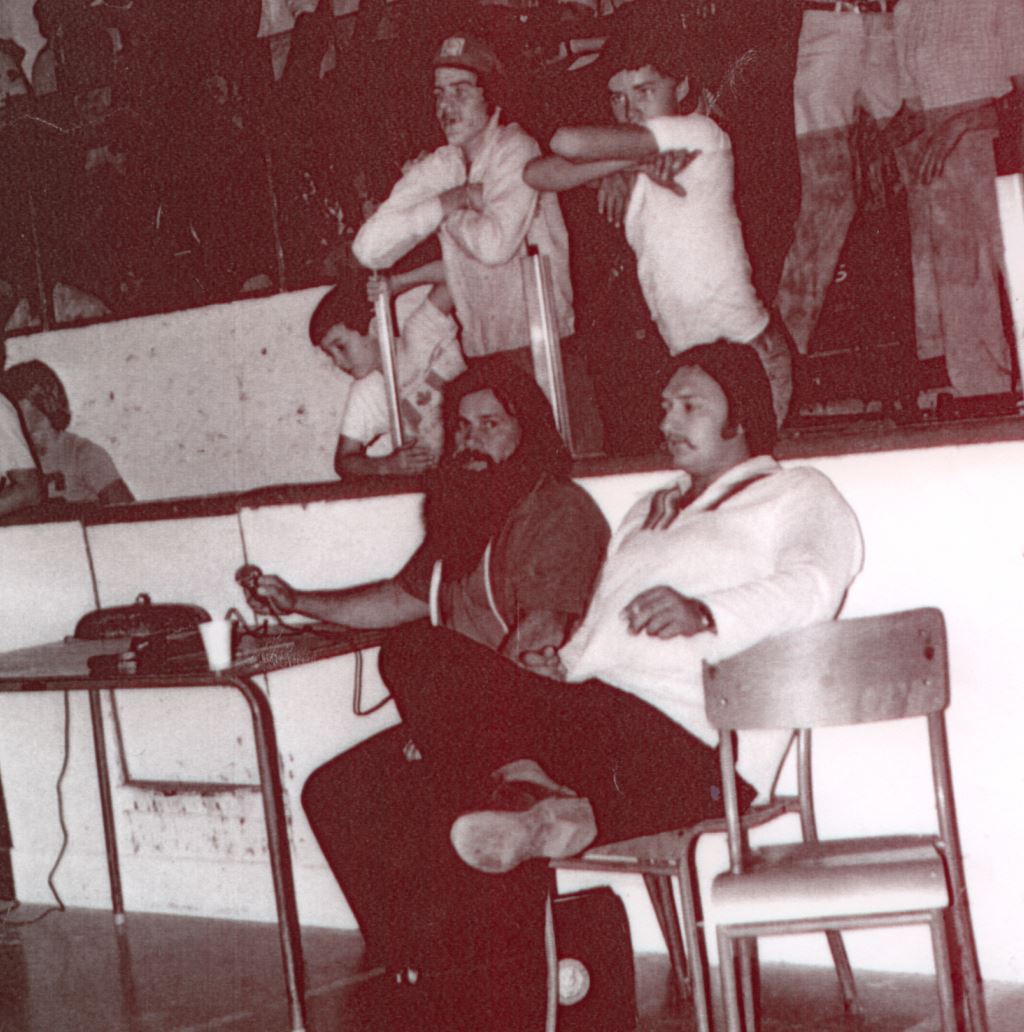
Dave McKigney and Conrad Gargus at a wrestling show. Photo by Terry Dart
Slam Wrestling: Did you grow up in Ontario?
Conrad Gargus: No, I was born and raised out in Alberta.
In the summers I would come out East and stay with my dad and my mom because I lived with my grandparents. My dad was a wrestler and he was on the road all the time and he owned the wrestling bear.
I was always with my grandparents because my parents were always traveling. He and my mother would sell the pictures of my dad and the wrestling bear, so he usually subsidized his income from his matches with the sales of the pictures.
Slam Wrestling: How did you get involved in working the Big Bear Promotions/Big Time Wrestling shows?
C.G.: We started selling more of the other wrestlers’ pictures, and we got involved in that and that’s how I got involved in the wrestling part as my dad was also the promoter. His real name was Dave McKigney. His wrestling name was either Gene Dubois or “The Wildman” or the “Canadian Wildman.” At that time, I was 16-years-old and I would help him out with the promotions, and the promotions part of it at that time was putting ads in small newspapers and putting up posters around town.
These posters were started with my dad and he said, “You’ve got to put these posters up so people will see them and know what’s going on in these little towns.” Well, some of these little towns, you were lucky to have a weekly newspaper, let alone nothing else. There was no TV or radio, some of these towns didn’t even have a weekly newspaper so the posters were the only way of attracting people to the wrestling events.
So that’s what I started to do, I started putting them up and then I started helping him layout the posters and design them, after he had the matches planned out for each town.
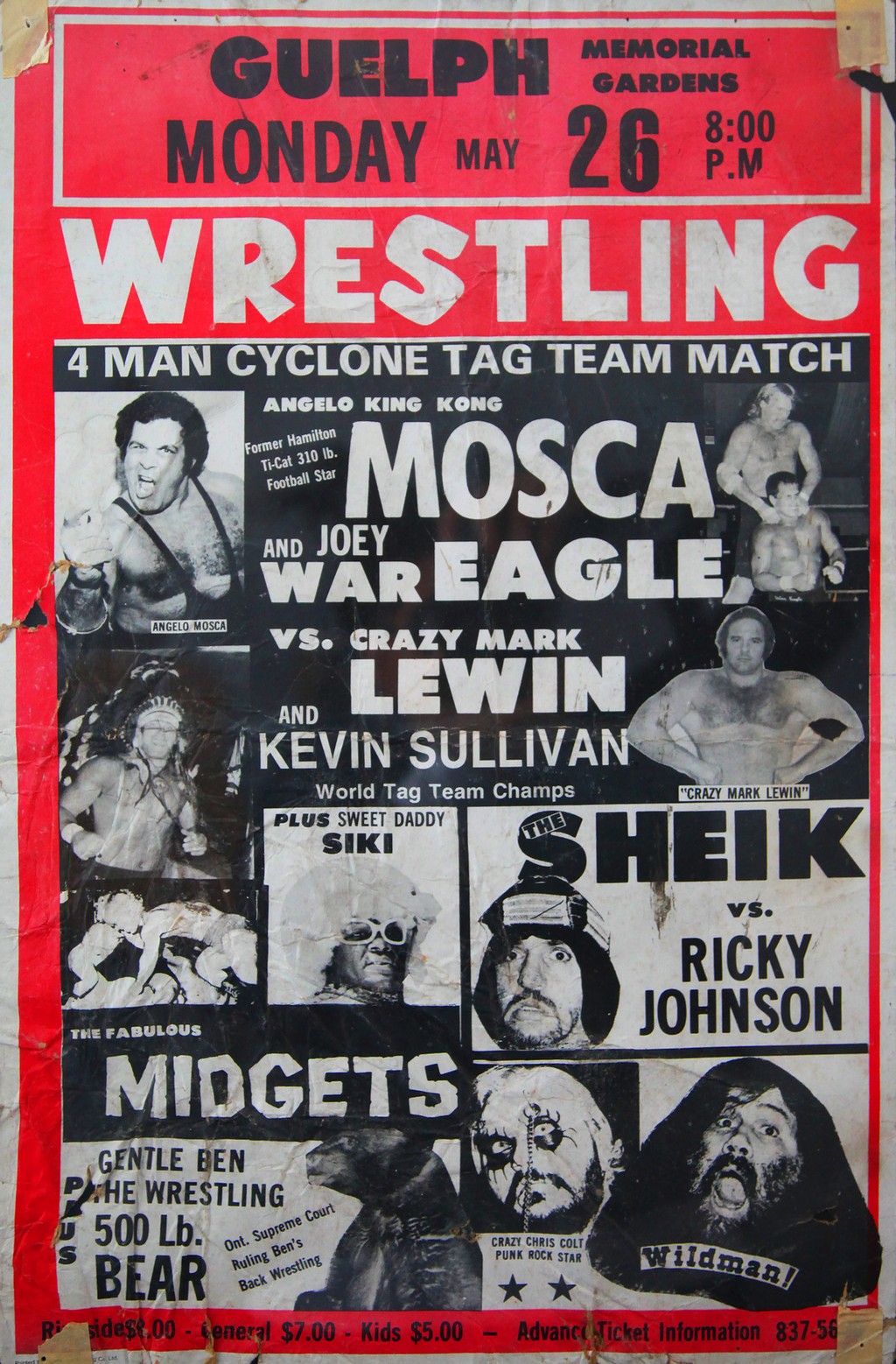
Slam Wrestling: Those posters you designed are striking and beautiful in their simplicity.
C.G: One of the key components of the design was that reverse wrestling head in different colours with the border around it and then we would write in the matches. I would supply the pictures, to a printer, I would write this out on a blank one, the printer would typeset it, and he would lay it out on these cards.
Now, what we did was we pre-printed either the red or the blue or the green, and then all we had to do was imprint in black the copy of the card, so that’s how it started out. We would print up maybe 20,000 or 30,000 of these blank posters and then we would imprint in black the matches at the various locations.
And there was a lot of locations as we would sometimes work five or six nights a week. There was almost no time off, maybe one day a week off, so to put up these posters you had to put them up at least ten days in advance. Sometimes, we would have to put them up as far as two weeks in advance for them to be most effective so people would know what’s happening and coming around town.
Slam Wrestling: And the posters were printed on incredibly sturdy cardstock.
C.G.: Yes, they were on heavy card, and so heavy that if somebody didn’t want to tape it in their window, we could fold them in the middle and they could stand up like a tripod by themselves.
And when we hung the posters we put them up with masking tape. Well, masking tape was the only thing that could hold these heavy things up, forget Scotch tape, we went through tons of masking tape just to put up posters and at that time we could walk around with a staple gun and staple posters to wooden hydro poles.
Then there was just the creativeness of being creative on the posters, using reverse type and bold pictures to make them effective and look good.
I sometimes see them in movies or films that are made in Toronto, and they show shots of the gym and on the walls I’ll spot one of my posters, that these gyms put up for decoration.
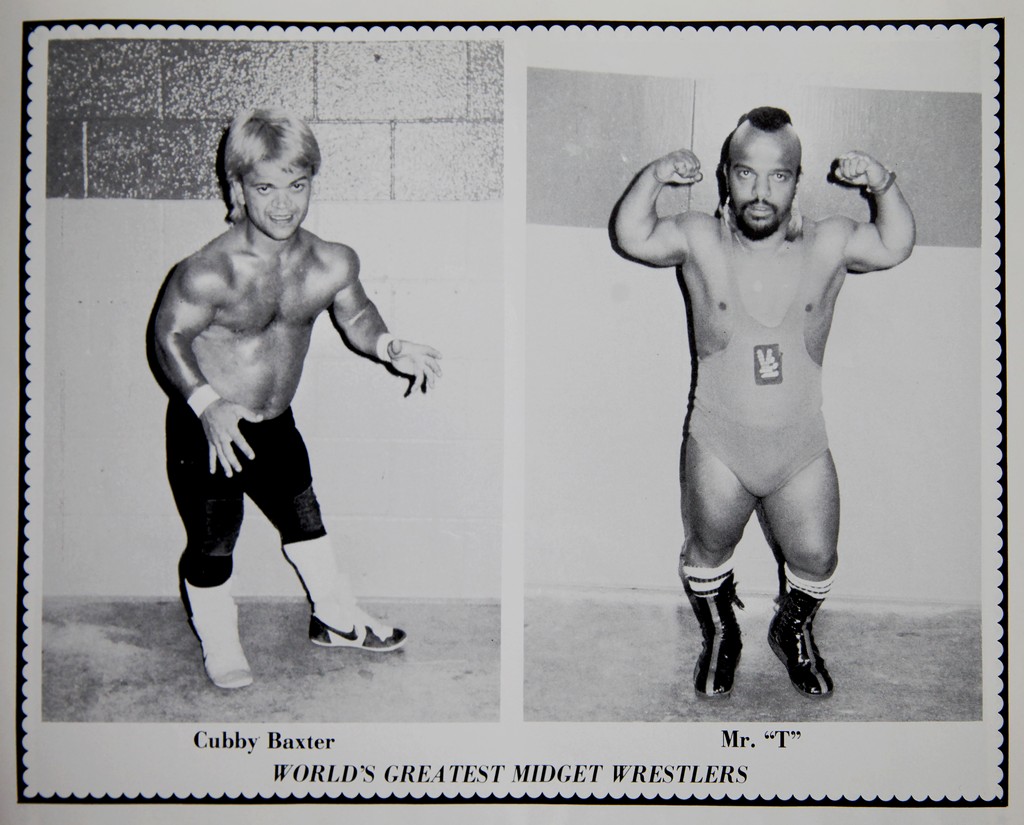
Slam Wrestling: Where did the images of the wrestlers come from that you used on the posters and in the wrestling programs?
C.G.: Sometimes we’d have fans who were photographers and they would take these pictures. There was one, he would take these pictures and then he would come by and show us these little 4”x6”s, or prints and ask, “Which ones do you want?” And I’d say, “Oh, I like this one and that one,” and then he’d go and blow up these pictures and there were a couple photographers who did that—a gentleman in London and a gentleman in Kitchener.
There was a gentleman who would travel around to the shows and we would let him in to the matches and he would hang around at ringside to get these pictures.
I even had an interest in photography, so I took some of the famous pictures you see. I took them with my 35 mm camera.
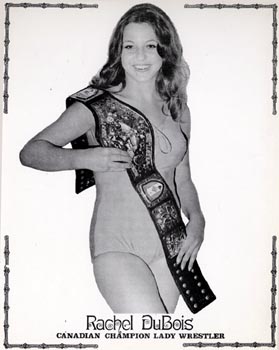
Slam Wrestling: The posters often advertised midgets and lady wrestlers, that included your sister, Rachel Dubois.
C.G: We had this great picture of Rachel with the belt, and we were the first ones to introduce lady wrestlers in Ontario because lady wrestling was not allowed.
So, what we did was we opened up with matches and we called them lady wrestlers, and then I think the Ontario Athletic Commission at that time was a wrestling and boxing commission. They told us you weren’t allowed to have lady wrestlers and then we said, “Well, no, they’re not wrestling, they’re a judo demonstration.” Then we would advertise lady wrestlers and then in small type the posters would read: “in a judo demonstration.”
So, we would have two lady wrestlers come into the ring with the robes on and do a demonstration. Well, after a minute they would get mad and throw each other into the ropes and get wrestling, so that would last a few minutes and it would make the crowds go wild. The commission didn’t like that but eventually they passed it and told us they’d be okay with it.
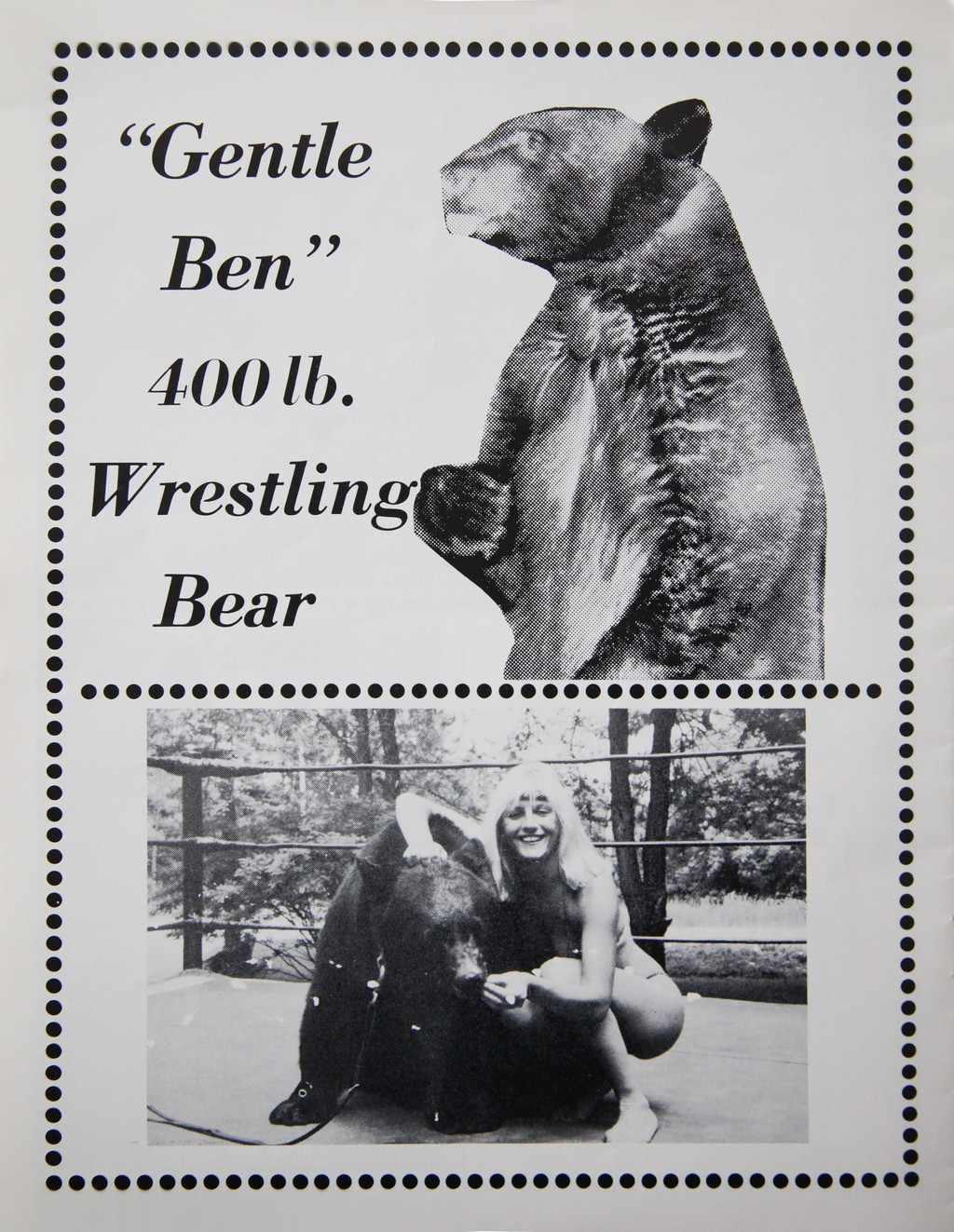
Slam Wrestling: Then there were the wrestling bears…
C.G.: The first bear was Terrible Ted, and after more than 30 years we had to put him down. He was paralyzed and then Gentle Ben was the next one and I trained him as a little cub. We got him as a little cub from a zoo and I was the one who went around and wrestled Gentle Ben and did the play fighting with him.
Slam Wrestling: Didn’t Terrible Ted get a bottle of Coke at the end of the matches?
C.G: That’s right, Terrible Ted got a bottle of Coke and he would sit up and drink the bottle of Coke, he would guzzle it right down his throat and people loved it. That was amazing. There wasn’t any media at that time and Coca-Cola didn’t hear about it, so we didn’t get any promotional dollars from Coke or anyone else. We just did that all on our own.
Slam Wrestling: Is there any film footage that exists from the Big Bear Promotions wrestling shows?
C.G: Very little because it wasn’t televised. The few matches that I have were televised in Belleville on a local cable station and I did the commentary with Angelo Mosca on those matches.
There was this one gentlemen, his dad was a good friend of my dad’s and he died, and his son ended up with a collection of those matches on tape. He put that tape on a DVD and he gave that DVD to me.
Frank Tunney owned the Toronto territory and had television and sometimes we would use stars from his shows but many times we used wrestlers from Detroit.
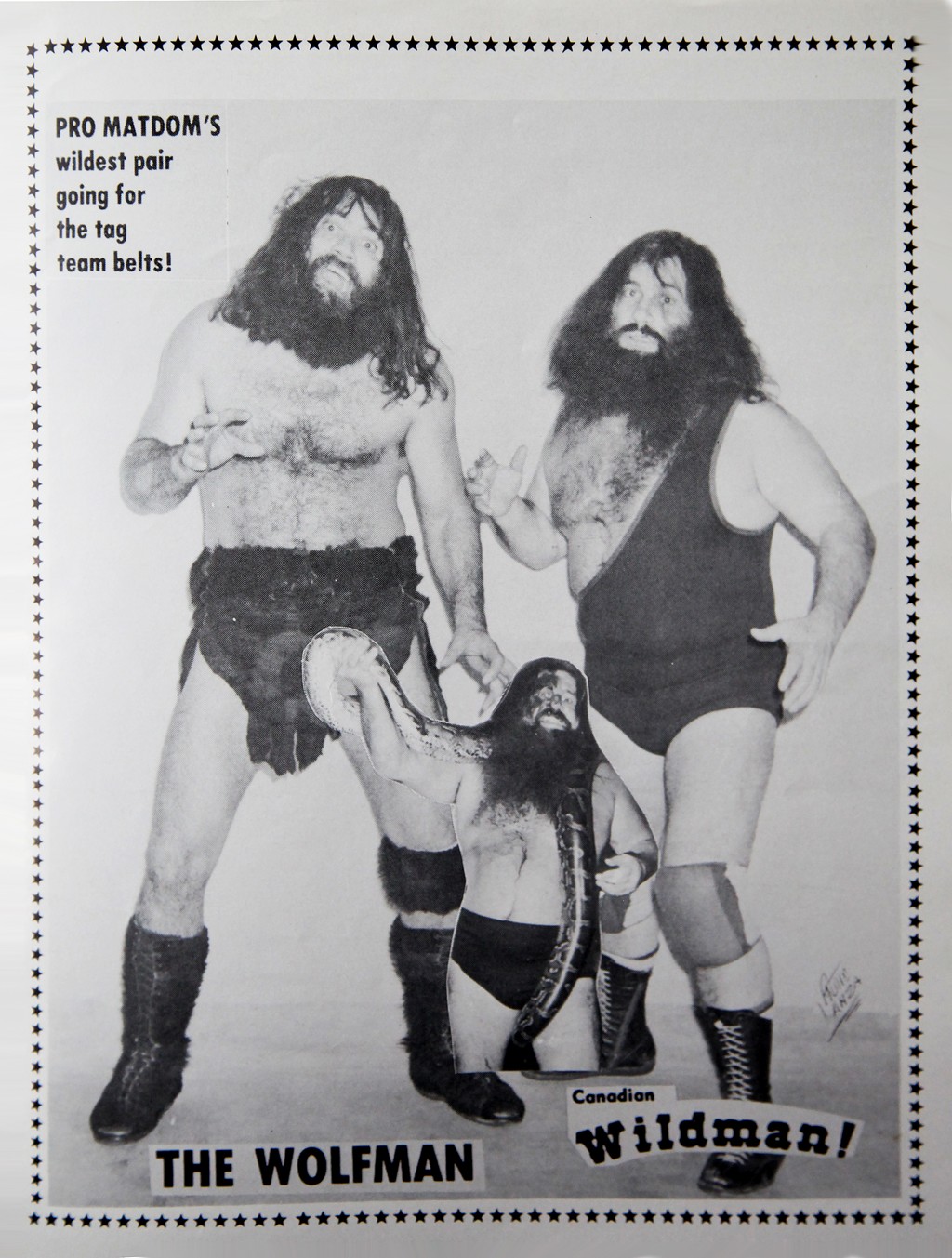
Slam Wrestling: Your stepfather, “The Canadian Wildman,” was often in the opening matches on the cards. Why was that?
C.G.: My dad, he liked to get the crowds going in the opening matches. He started up a lot of the shows and later on he featured himself in some main events, but not much. He was mostly on the undercard.
Slam Wrestling: Did you use other colours for the posters other than red, blue, or green?
C.G: We actually used fluorescent colours too. We had a fluorescent orange and a fluorescent red, and we had to get those screen-printed and they were more expensive to print.
We would use red on a poster and then we would return to that town in three weeks and come back and we would have a blue one, just so it would look different.
Slam Wrestling: Do you still have many of those posters?
C.G: I probably have the largest collection of them. I imagine it would be the sons and daughters of the wrestlers who have collected them because they would have inherited them, or the sons or daughters of a referee. I get calls and people ask, “Conrad, do you have any of those posters still with my dad on them?” and I’d say, “Well yeah, actually I do,” but I didn’t want to part with many. But sometimes I would give a few of them away.

Conrad Gargus and Rachael Dubois in 2003.
Slam Wrestling: And you’re still in the printing business, right?
C.G.: Yes, I’m still involved in printing, so I basically sell print to companies that need printing. I do marketing materials, brochures, flyers, business cards, stationary, letterhead, and so on. There’s still a need for print. It’s not as big as it used to be as companies don’t need catalogues anymore, they’ll have a PDF on their website.
Slam Wrestling: Do you remember many of the arenas over the years like the Port Hope Sports Complex, Kitchener Memorial Auditorium, and Guelph Memorial Gardens?
C.G: I remember all the arenas. Put it this way, I was in every arena in Ontario with a wrestling show that had over 3,000 to 4,000 people and if the town had an arena, then we had a show there. And it was in the summer and there was no ice and a lot of the arenas had roller skating in the summer and that was a big thing back then. Then we would come in with the matches and put in the ring and the chairs and have these unforgettable shows and the fans would keep coming back.
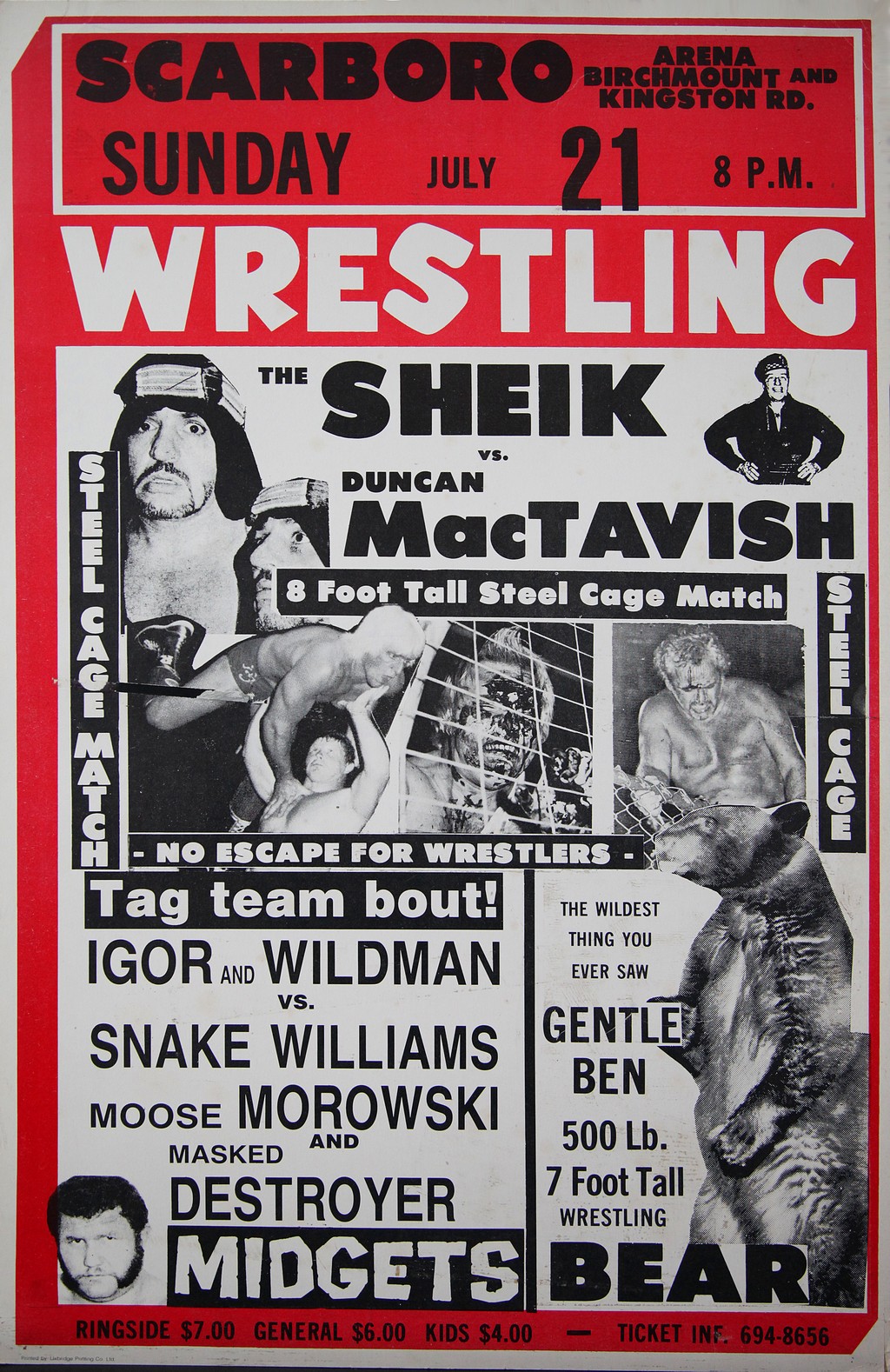
Slam Wrestling: Looking at the posters now, do you have any favourites?
C.G.: I can’t say if I have one particular favourite, but some of the most attractive posters we created had names like Sheik and Mosca in big bold type with the big, black-and-white head shots beside them.
There would be Four-Man Cyclone Tag Team and Steel Cage Matches, then at the bottom of the poster it would sometimes say “Plus Other Big Bouts.”
Those are the ones I like the most with the big black letters and big photos that really grab your attention.
It has been 30-plus years now and seeing those old posters is like going back in the past. I’ll see the pictures of The Canadian Wildman and think, “Was that really you, dad?” And I say with a smile, “Yeah, that was you.”
Credit: Poster and Program Photos/Sara Geidlinger
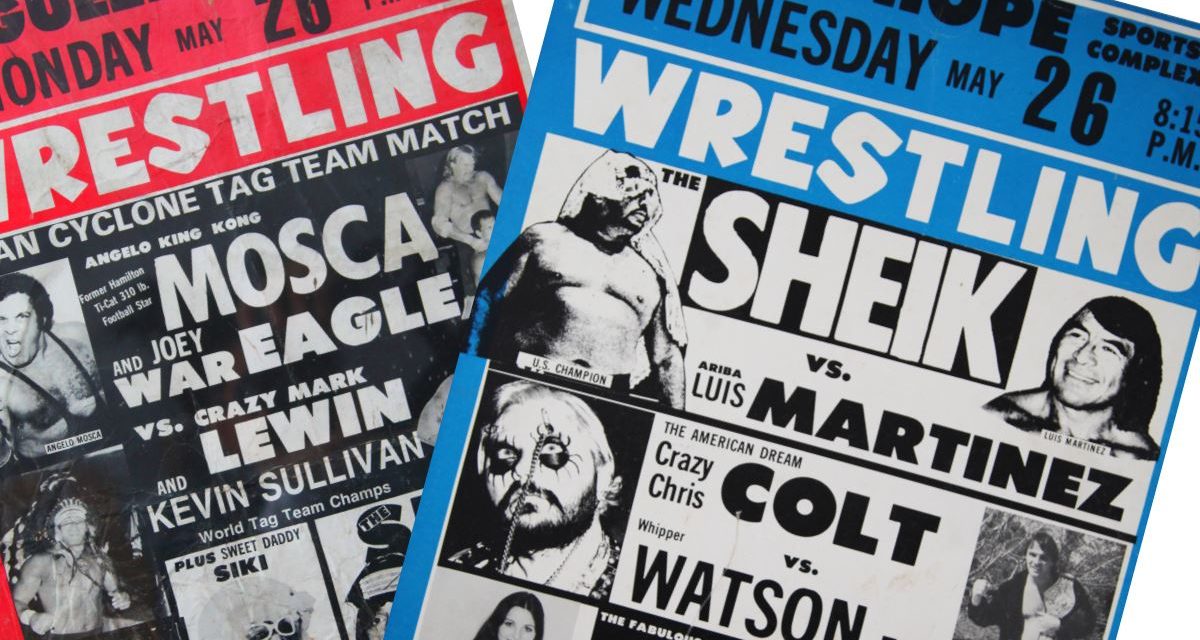
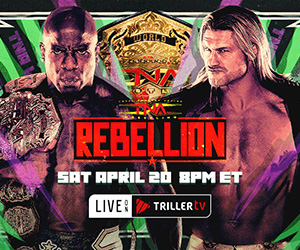
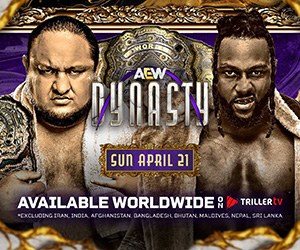

This brought back a lot of memories. I attended that Guelph show, with the poster above. It was 1986 I believe and I was 11 years old. I remember pretty vividly, being chased across the arena by an “out of control” Sheik and dropping my french fries LOL. After the show my friends and I hung around, talked to some of the wrestlers and got their autographs. I remember in particular, Kevin Sullivan, Mark Lewin and the Wildman himself, Dave McKigney being incredibly friendly and gracious. We tried to get the Sheik to sign for us, but always in character, he screamed something unintelligible at us and literally ran out of the building. That guy was awesome, truly a legend.
I recall the first time I attended one of McKigney’s shows, it was the previous fall. Our barber used to promote the shows by putting those wonderfully designed and captivating posters in the window of his shop and we just happened to get haircuts the night of a show at the Kitchener Auditorium. He also just happened to have some comp tickets he didn’t know what to do with so he asked if we would be interested. Of course, provided our dad would be willing to drive us to Kitchener to do so, which he agreed to do. I don’t remember a lot of that show, though, other than there was a good amount of blood and the main event was a cage match, but they had issues with the cage that caused them to end it very abruptly. What I took away from it was that it wasn’t all that much like the WWF wrestling that I watched on TV every weekend. I enjoyed it MORE!
Those posters though, I used to have a pretty decent sized collection of those back in the day. Whenever we travelled anywhere in the province in those days, I would always make sure if I saw any, to grab one off a telephone pole (this was usually days or even weeks after the event had been held) and throw it in the backseat of our family vehicle. Conrad did such an amazing job with those posters, those things just POPPED, and made you want to show up and see what kind of chaos would ensue at the show.
It was such a shame that the Wildman was taken from us far too soon. He seemed like such a larger than life figure. He had a hell of a wrestling promotion and he definitely brought some joy to my childhood.